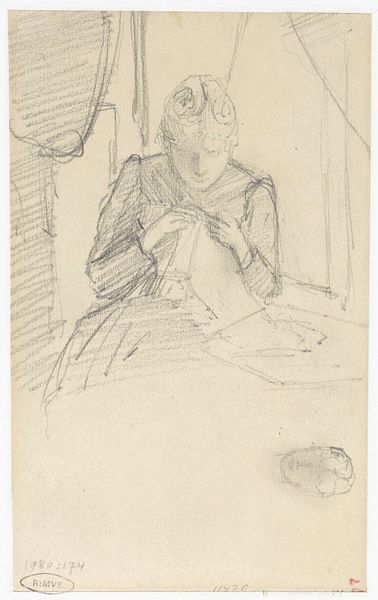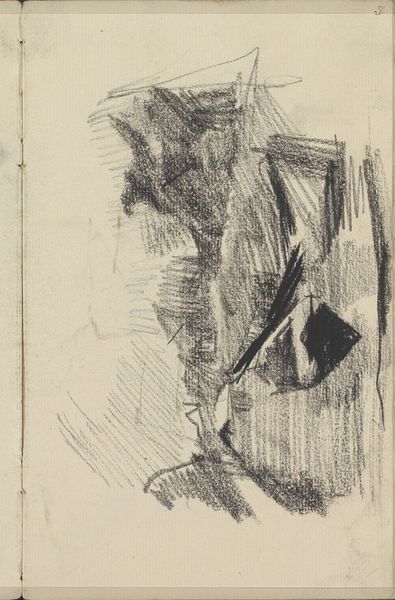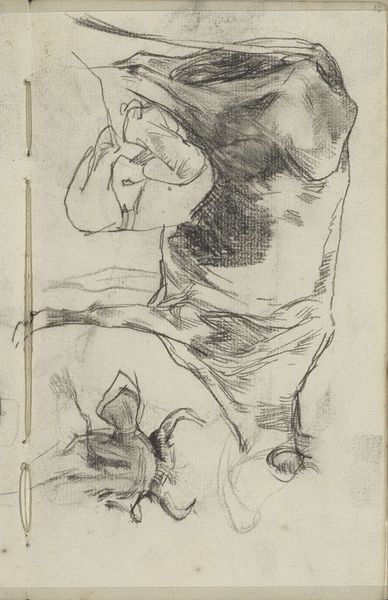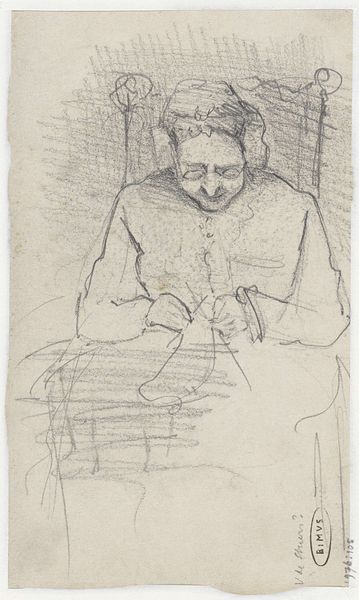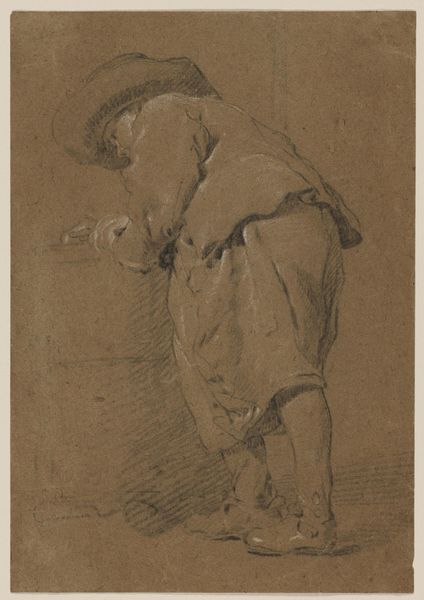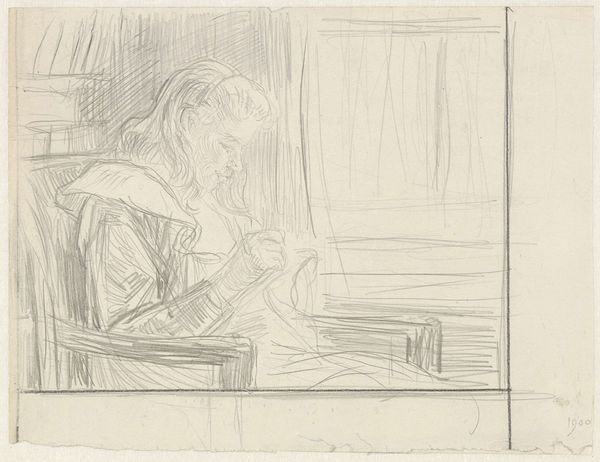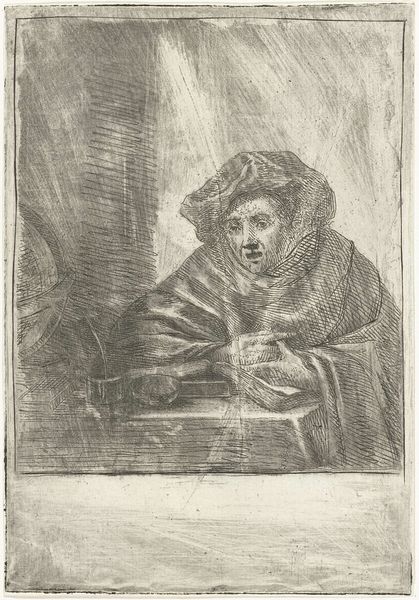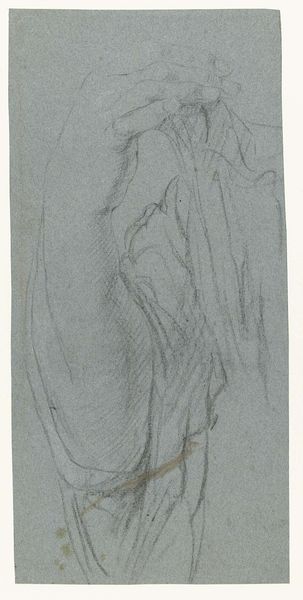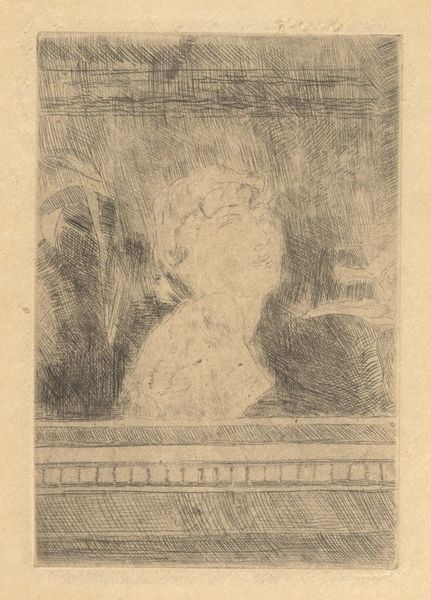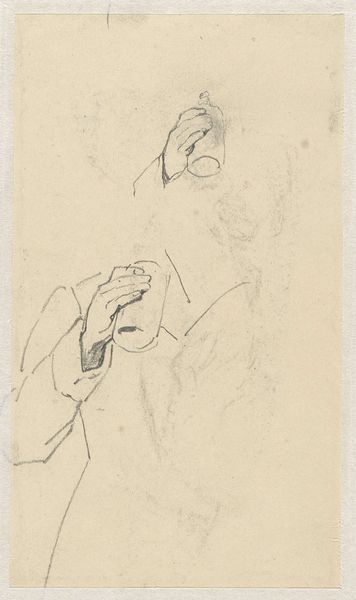
drawing, paper, dry-media, pencil
#
portrait
#
drawing
#
pencil sketch
#
figuration
#
paper
#
dry-media
#
pencil
#
realism
Dimensions: height 332 mm, width 234 mm
Copyright: Rijks Museum: Open Domain
Editor: So, this is Jan Veth's "Portrait of the Sculptor Lambertus Zijl," created sometime between 1874 and 1925. It's a pencil drawing on paper. I find it intriguing—almost dreamlike because of the soft lines and grayscale tones. What do you see in this piece? Curator: Well, first, notice how Veth captured Zijl's gaze. It’s direct, yet there's a sense of introspection. Think of the hand—holding a sculpture or model? It symbolizes creation, obviously, but also consider the cultural memory of the sculptor, the 'hand of God' almost, forming humanity from clay. Does this invoke any prior images for you? Editor: I guess that connects with classical sculptures... I see how the hand is a powerful symbol here. Curator: Precisely! And notice Zijl's cap – almost like a scholar's cap. Veth might be positioning Zijl not just as a craftsman but as an intellectual, a thinker. Remember that art wasn’t always seen as ‘intellectual’. Could this be an effort to elevate the status of the artist? Editor: That's a compelling idea. I hadn't considered how deliberate that choice of headwear might be. Curator: Symbolism works that way. Even the darkness surrounding the figure suggests a certain solemnity or the internal world of creative thought. Does seeing the work this way alter your initial "dreamlike" interpretation? Editor: It does. It feels more purposeful now, less accidental, more deliberate. There's so much intention packed into what initially looked like just a simple portrait. Curator: Exactly! By deciphering visual cues, we access the artist's intent and the deeper cultural meanings embedded within. Editor: I’ll definitely be looking at portraits with different eyes from now on. Thanks for pointing out all the layered meanings in this one.
Comments
No comments
Be the first to comment and join the conversation on the ultimate creative platform.
